13 Best Gross Motor Activity for Preschoolers to Encourage Active Playtime
Wondering how to enhance your preschooler’s gross motor skills?
If you're looking for the best gross motor activity for preschoolers, you've come to the right place. In this article, we've come up with a list of the best gross motor activities for your little one, each designed to encourage active play and develop vital physical activities.
From simple indoor games to lively outdoor challenges, we provide engaging ways for your child to master movement, balance, and coordination. These fun yet educational everyday activities are the building blocks for healthy development –– exactly what active, growing preschoolers need!
Fun and Engaging Gross Motor Activities
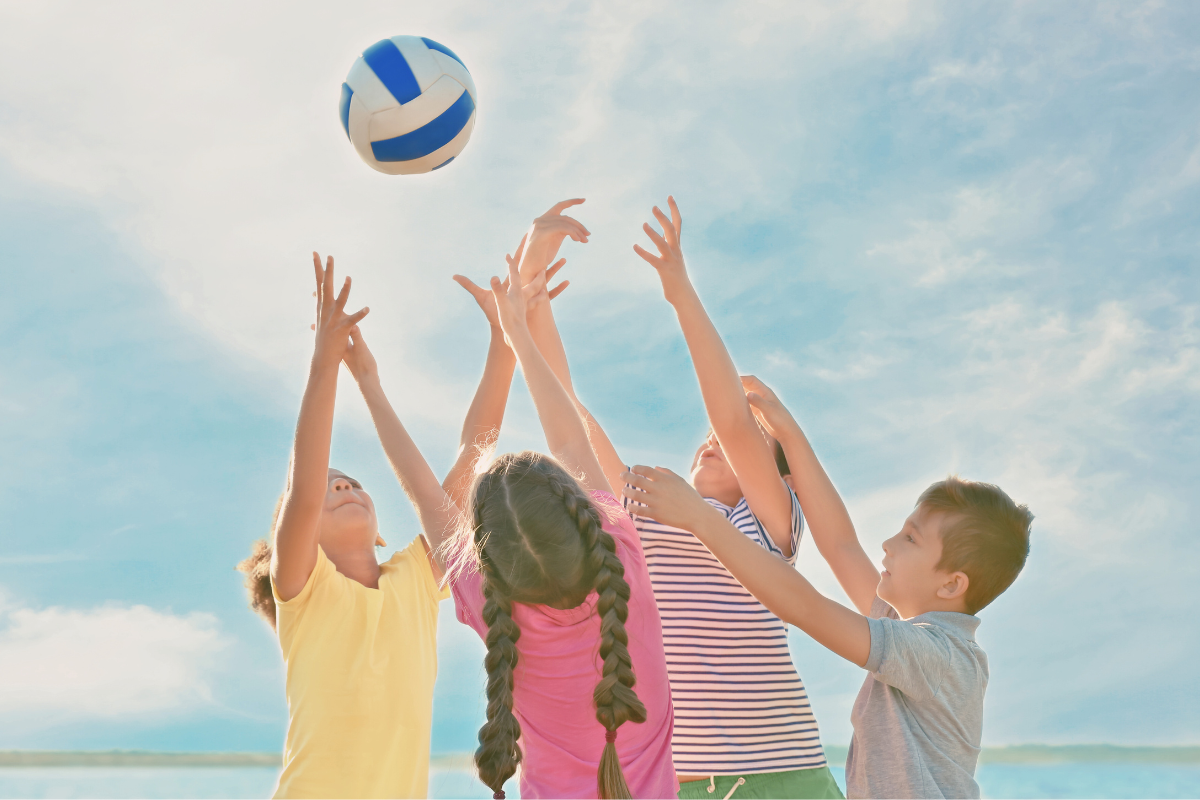
Imagine a world where the ground is hot lava one minute and the next you’re dodging imaginary laser beams. Can you imagine it?
If yes, welcome to the exhilarating universe of gross motor activities for preschoolers!
Gross motor activities are such a fun way to power through a child’s development, be it physical, emotional, cognitive or social. From the classic ‘Duck Duck Goose’ to innovative homemade Skee-Ball setups, the variety of games available is as vast as the ocean and just as deep in benefits.
Indoors or outdoors, these delightful escapades are more than just plain fun – they’re a cornerstone in building a child’s gross motor skills.
Activities like the Pumpkin Cup Stack Toss and Catch, or even a simple game of Hopscotch, are designed to have kids jumping for joy while unwittingly honing skills like hand-eye coordination and balance. Games like blob and shadow tag, where children chase and interact with peers, also get young kids moving in more ways than one.
But these gross motor activities aren’t just about the physical leaps and bounds – they also serve up a hearty side dish of cognitive and social development. They allow kids to learn to navigate the world, both physically and socially, in a safe and entertaining environment.
In the next sections, we'll discuss some of the best and most fun gross motor activities that you can incorporate in your child's regular routine.
Animal Imitation Games
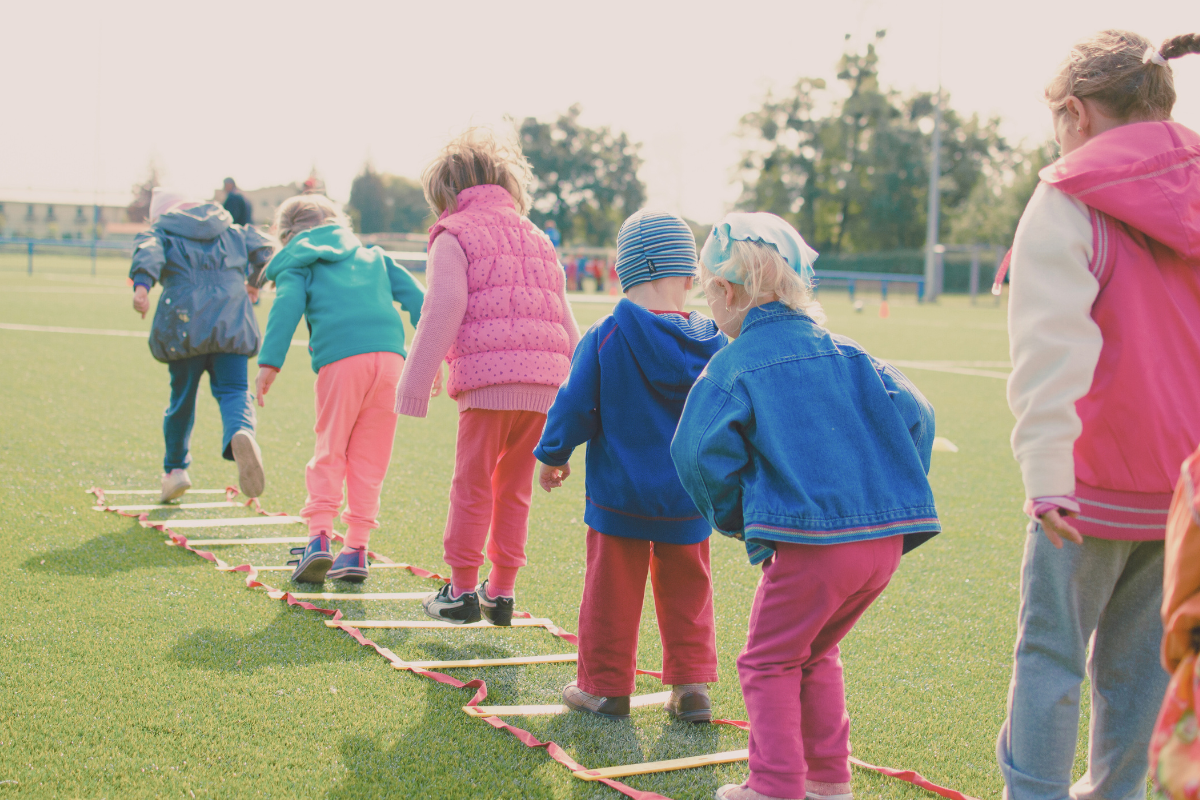
Ready for a jungle safari in your own backyard?
Animal imitation games are exactly what they sound like: they're gross motor games that involve children mimicking the movements of various animals.
This playful activity not only enhances physical coordination and balance but also sparks creativity, imagination, and so much fun. With these games, little kids can learn about different animals and their behaviors, enriching their understanding of the world around them while having fun at the same time.
The best part? They're simple, require no special equipment, can be done by one child, and can be played indoors or outdoors – perfect for busy bee parents who want to get as much quality time with their kids as as possible.
Examples of animal walks or behaviors that you can turn into a fun game include:
-
hop like a frog
-
strut like a duck
-
crawl like a snake
-
swing like a monkey
-
stomp like an elephant
You can even ramp up the challenge by adding Poppyseed Play Wood Stepping Stones to the mix. The rule is that they need to step on the stones when they do the animal walk. With just this simple addition, you've got yourself a gross motor extravaganza that’s both educational and just plain fun.
FUN FACT: Aside from animal imitation games, balance stepping stones actually offer plenty of value. Here are 6 fun games with stepping stones you should consider checking out today!
Balancing Challenges
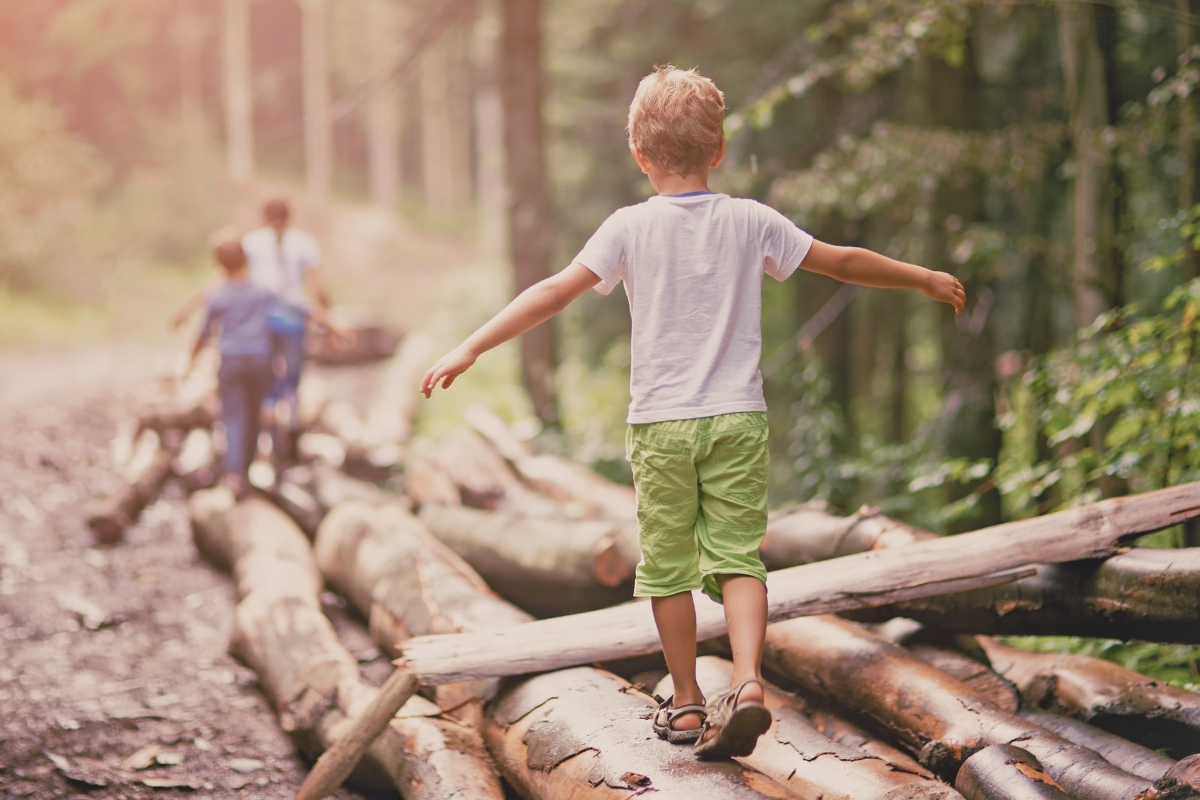
Who knew teaching your kid to follow a line might be their first tiny step towards Olympic glory?
You can turn this simple child walk into a fun balancing game with squiggly chalk lines and a bunch of toys around – if you can dodge toys scattered across the living room floor, you can dodge anything!
Additionally, playing on balance boards like the Poppyseed Play Balance Board and balance beams like the Poppyseed Play Wooden Balance Beam isn't just for future gymnasts. It's also perfect for little adventurers looking to master their hand-eye coordination and stability.
These seemingly simple games transform balancing into an engaging and educational challenge, allowing kids to learn how to navigate their physical world with confidence and a giggle.
Dance Party
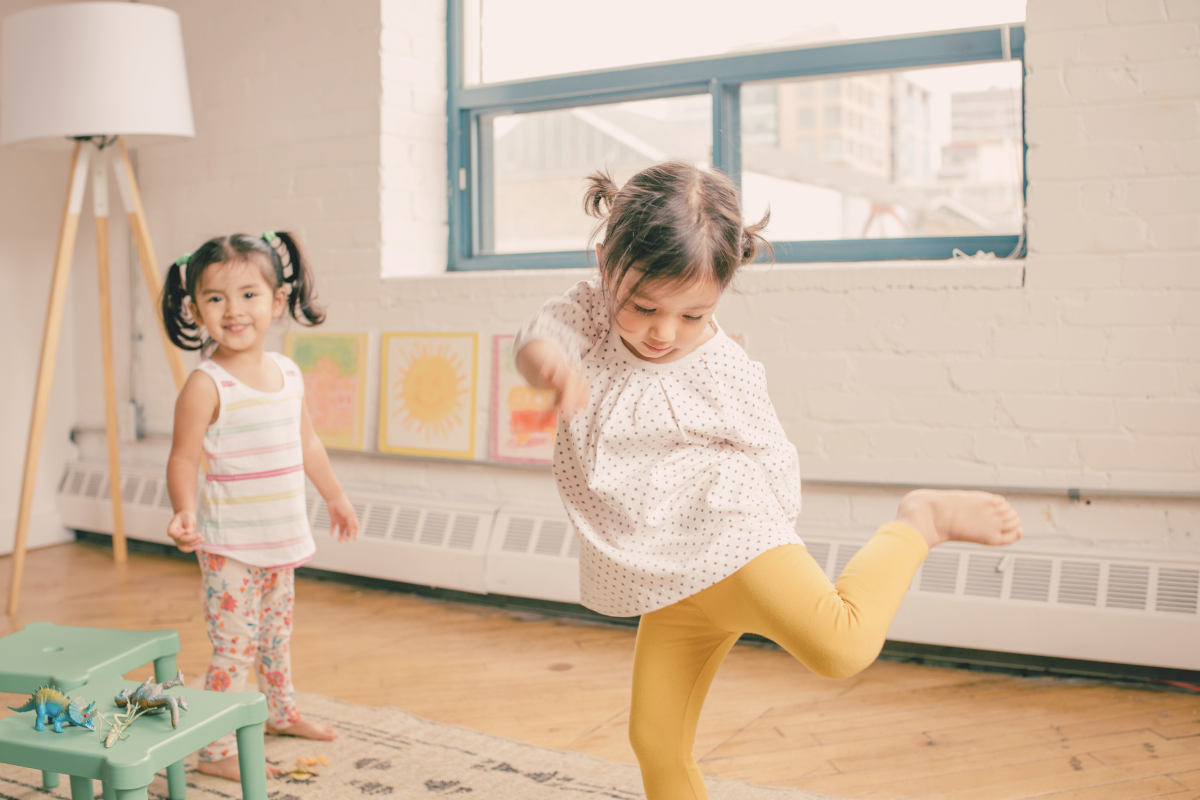
When the beat drops, so do toddler inhibitions. Turning your living room into a dance floor is like hitting the magic button for fun and giggles.
The best part is that a living room dance party doesn't just get kids moving; it’s a full-on motor skills workshop where preschoolers learn to groove and improve their rhythm and gross motor coordination one dance move at a time, from the 'freeze dance' games that test their ability to control their bodies to the wild abandon of a full-on wiggle fest.
In other words, they're the perfect gross motor activity to let your kids shake out those wiggles and maybe even bust a move that’ll have you reaching for your phone to capture the moment.
So go ahead, crank up those tunes, and clear the toy mines off the floor. Watch your little ones jump, twirl, and boogie, and you’ll see their motor skills blossoming right before your eyes.
Besides, it’s a great way for the whole family to join in and maybe even let loose some of their own moves – because let’s face it, parenting is a lot easier when you’re dancing through it!
Creative Obstacle Courses
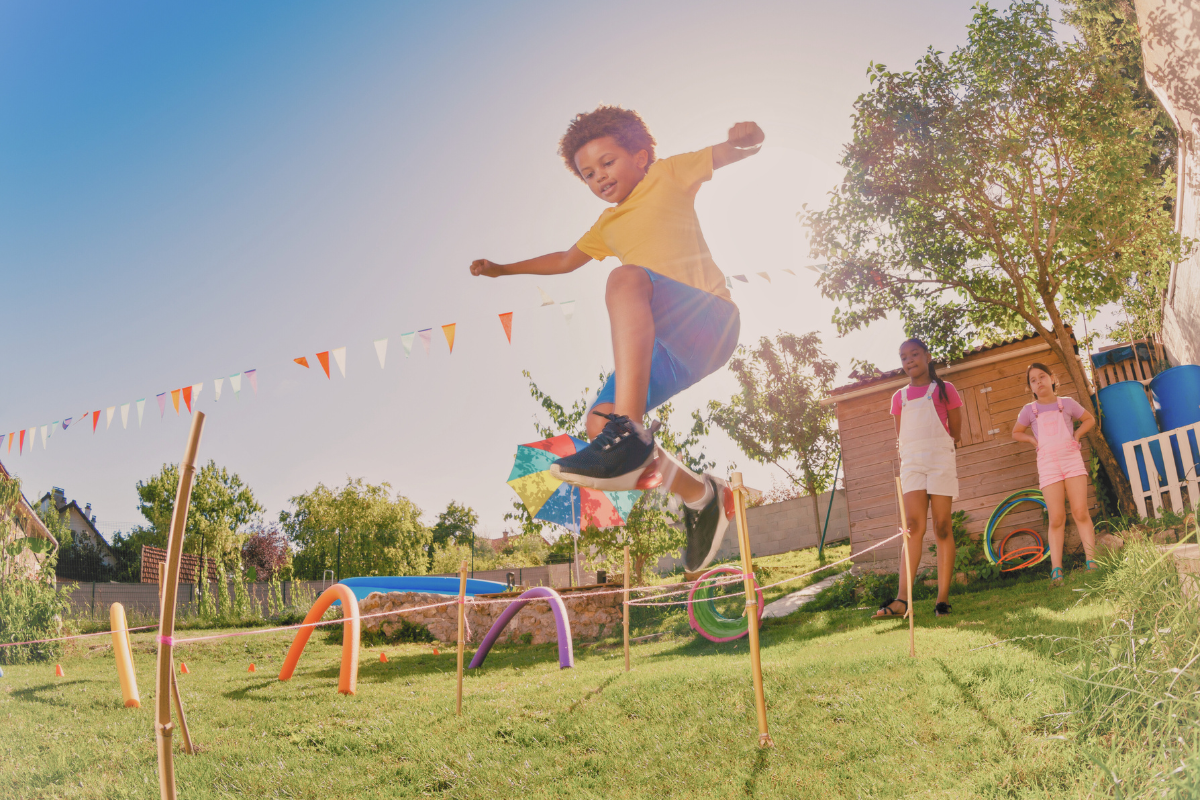
Obstacle courses are the ultimate playground for young adventurers and thrill-seekers.
Whether crafted indoors with couch cushions and chairs or outdoors with playground equipment, these courses are a veritable smorgasbord of gross motor skills activities.
It doesn't matter if your kid has to crawl over pillows, zigzag around cones, or hop between pool noodles – each component of an obstacle course is designed to challenge and improve a child’s gross motor abilities.
And remember, while they're mastering these gross motor activities, they're not just playing; they're preparing their little bodies for all of life’s big adventures. So, let the courses be as wild as their imaginations, because who said training for life's challenges couldn't be an absolute blast?
Indoor Obstacles
Stuck indoors on a rainy day? No problem! You can transform your home into a wonderland with an indoor obstacle course.
As with other indoor gross motor activities, you can also use everyday items to create a maze. From skating around paper plates with one foot to jumping over a laundry basket to crawling inside cardboard boxes, these activities are not only fun but also a clever way to sharpen their motor skills without needing to step outside.
Outdoor Obstacles
The great outdoors is the perfect canvas for an epic obstacle course.
You can use the playground’s natural terrain and equipment to set up a course that has your little one jumping, running, and climbing to their heart’s content.
Not only does this promote active play, but it also taps into their adventurous spirit, encouraging them to tackle physical challenges and revel in the fresh air.
Team Games and Relays
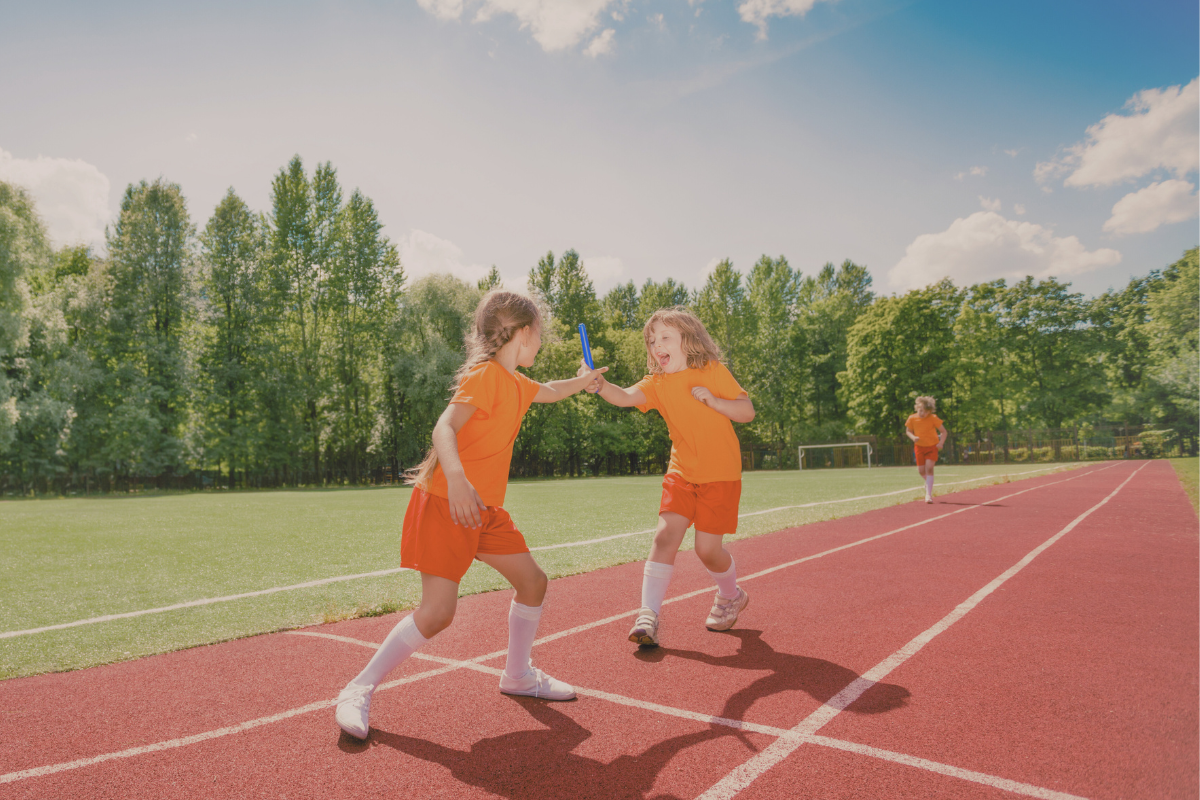
Nothing brings out the competitive spirit and camaraderie like team games and relays. These activities are a powerhouse for developing not just gross motor skills, but also:
-
cooperation
-
team spirit
-
sportsmanship
-
patience
From classic relay races like the Egg and Spoon to modern twists on Capture the Flag, these outdoor gross motor activities make an awesome option for playground play.
Relay Races
Ready, set, go!
Relay races are a staple of fun activities that get kids moving and shaking.
By incorporating elements like hopscotch, children not only enjoy the thrill of the race but also work on essential skills such as balance and sequencing. It’s a fantastic way to introduce friendly competition while focusing on gross motor development.
Parachute Play
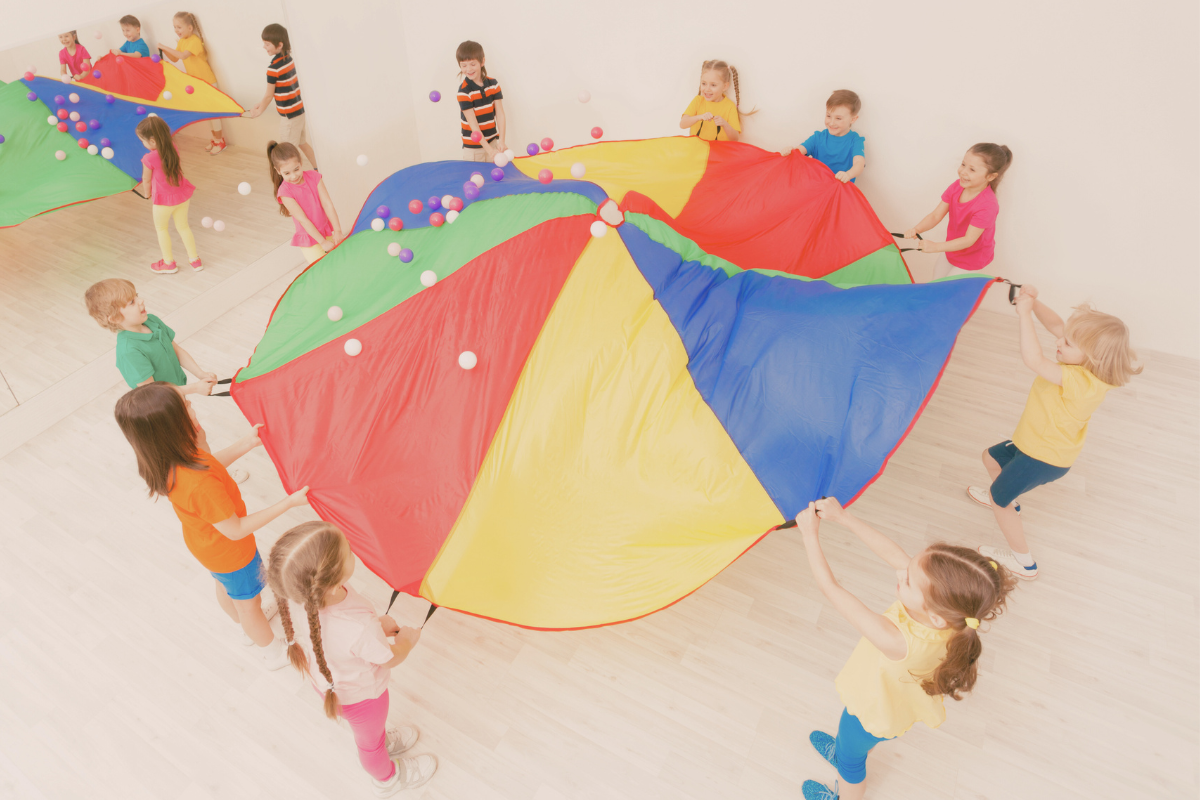
What’s vibrant, floaty, and a whole lot of fun? Parachute play!
Parachute games are classic kids activities in preschool classrooms. In this game, everyone grabs a piece of the parachute and works together to create waves, lifts, and rolls.
It’s not just about the gross motor movement; it’s about learning to work as a team and developing that all-important group coordination.
Take note that parachute games can also be made into an outdoor game for kids, so it's quite a flexible option.
Sensory Integration Activities
The world is a sensory buffet for preschoolers, and integrating these experiences with gross motor skill development can benefit them greatly.
With these activities, children can explore and learn in a way that stimulates their senses and enhances their spatial awareness.
Sensory Walks
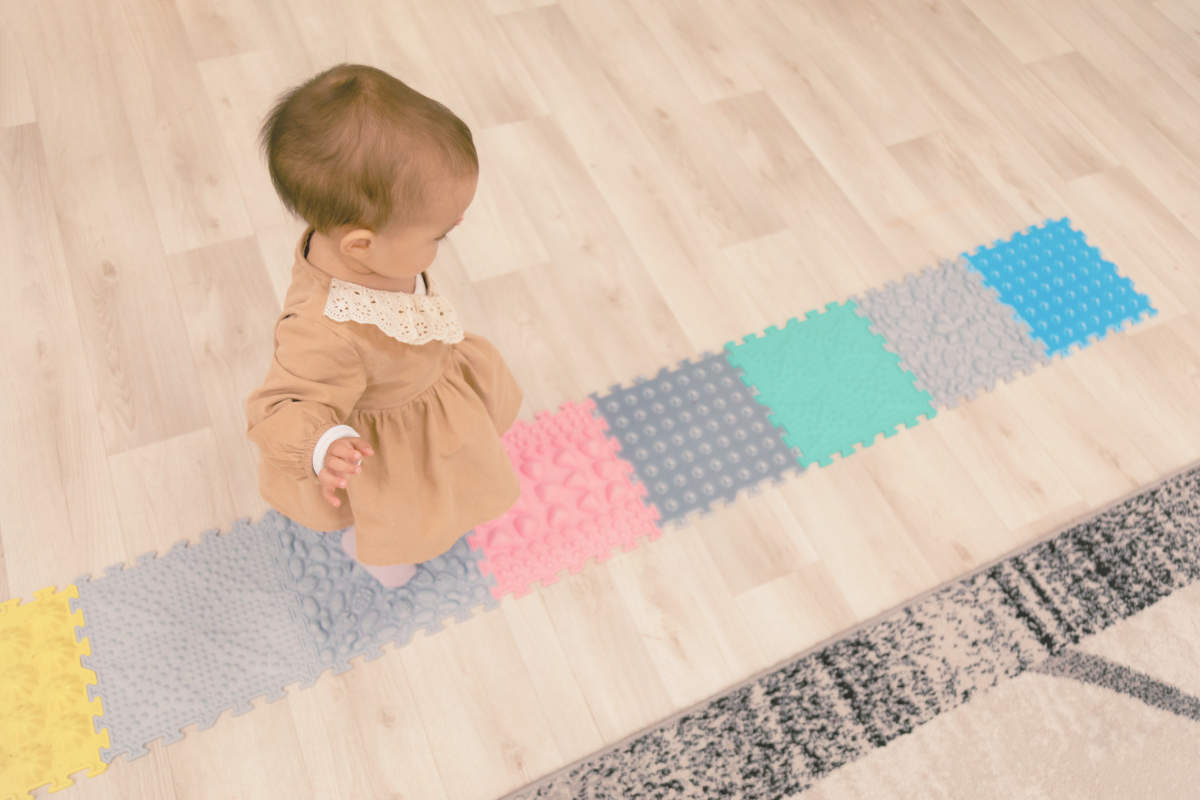
Take a walk on the wild side with sensory walks. These paths are crafted with various materials, providing preschoolers with a rich tapestry of tactile sensations.
Some examples of materials used in sensory walks include:
-
Softness of cotton balls
-
Crackle of bubble wrap
-
Smoothness of sand
-
Roughness of bark
-
Coolness of water
Sensory walks are a simple yet effective way to boost body awareness and offer a unique gross motor experience.
Messy Play
Messy play is a beloved part of early childhood, where the feeling of sand slipping through fingers or paint squishing underfoot is not only delightful but educational.
These hands-on activities enhance tactile experiences and gross motor skills, allowing for full sensory engagement and a ton of giggles.
Fine Motor Skill Development
While gross motor skills get the big muscles moving, fine motor skills are all about the details. These activities are critical for preschoolers as they prepare for tasks requiring precision and coordination, like:
-
holding a pencil
-
tying shoelaces
-
buttoning buttons
-
zipping zippers
-
using scissors
-
threading beads
Developing a child’s gross motor skills is equally important because it lays the foundation for their overall motor skills development.
Puzzles and Blocks
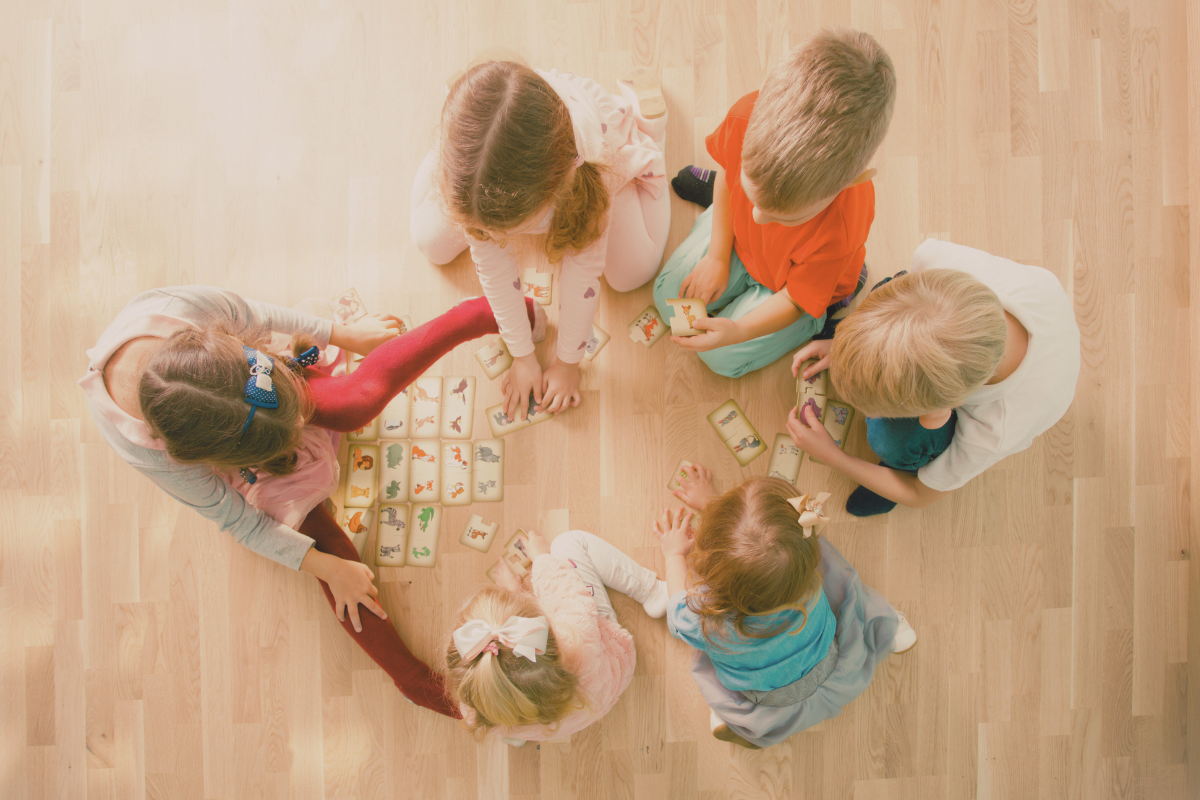
Puzzles and blocks are not just toys; they’re the tools of tiny architects and problem solvers.
These activities sharpen fine motor precision and problem-solving abilities, laying the foundation for future tasks that require a keen eye and a steady hand.
Threading and Lacing
Threading and lacing may seem like simple pastimes, but the concentration and dexterity involved are building blocks for fine motor control.
With each bead or Cheerio, preschoolers are practicing essential skills that will serve them well in school and beyond.
Outdoor Exploration
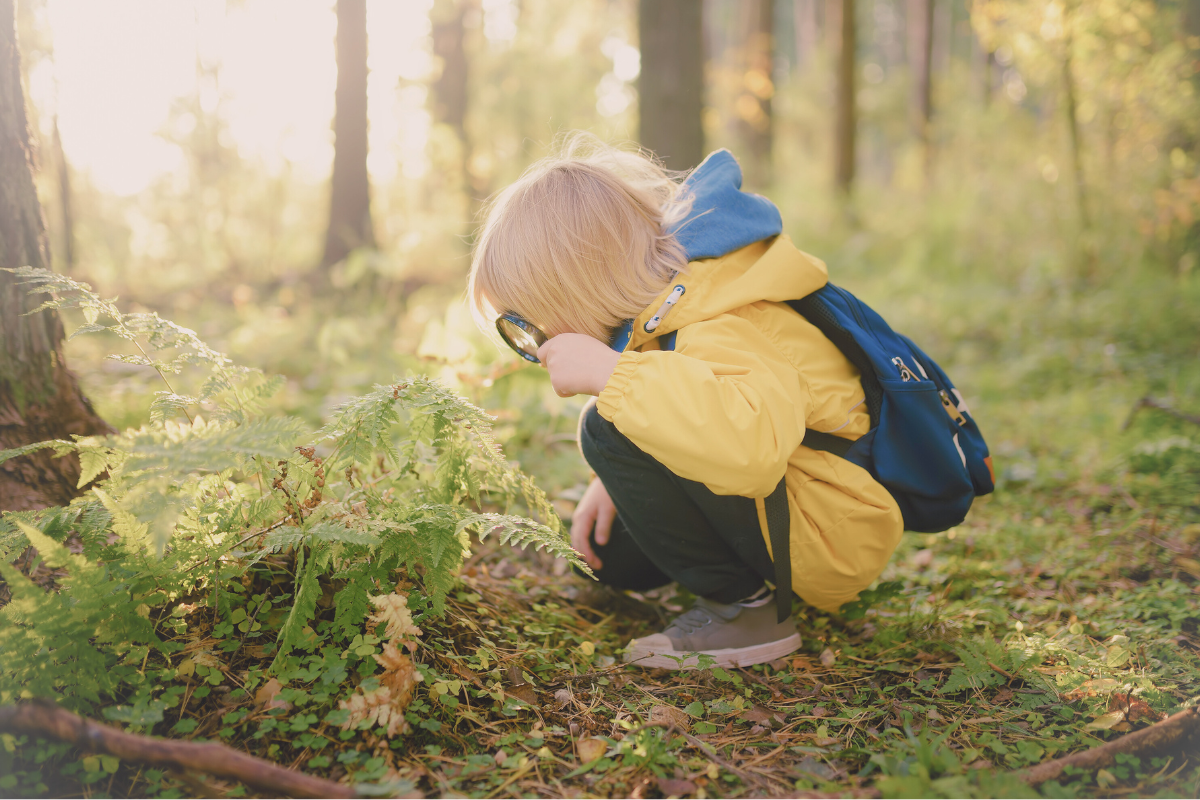
The great outdoors is a playground for the senses and a gym for developing muscles. Outdoor exploration encourages curiosity and gross motor skill development in ways that a classroom simply cannot.
Nature Scavenger Hunts
Nature scavenger hunts are a whimsical way to get kids exploring and moving.
Kids don't just collect treasures when they search for leaves, rocks, or flowers. Actually, they're also enhancing their gross motor skills and learning in a very fun way how to connect with the world around them.
Playground Adventures
Playground adventures are more than just fun – they’re a critical part of a child’s physical development.
Climbing, swinging, and sliding on playground equipment strengthens large muscle groups and balance, setting the stage for healthy physical growth.
Adaptability and Inclusivity
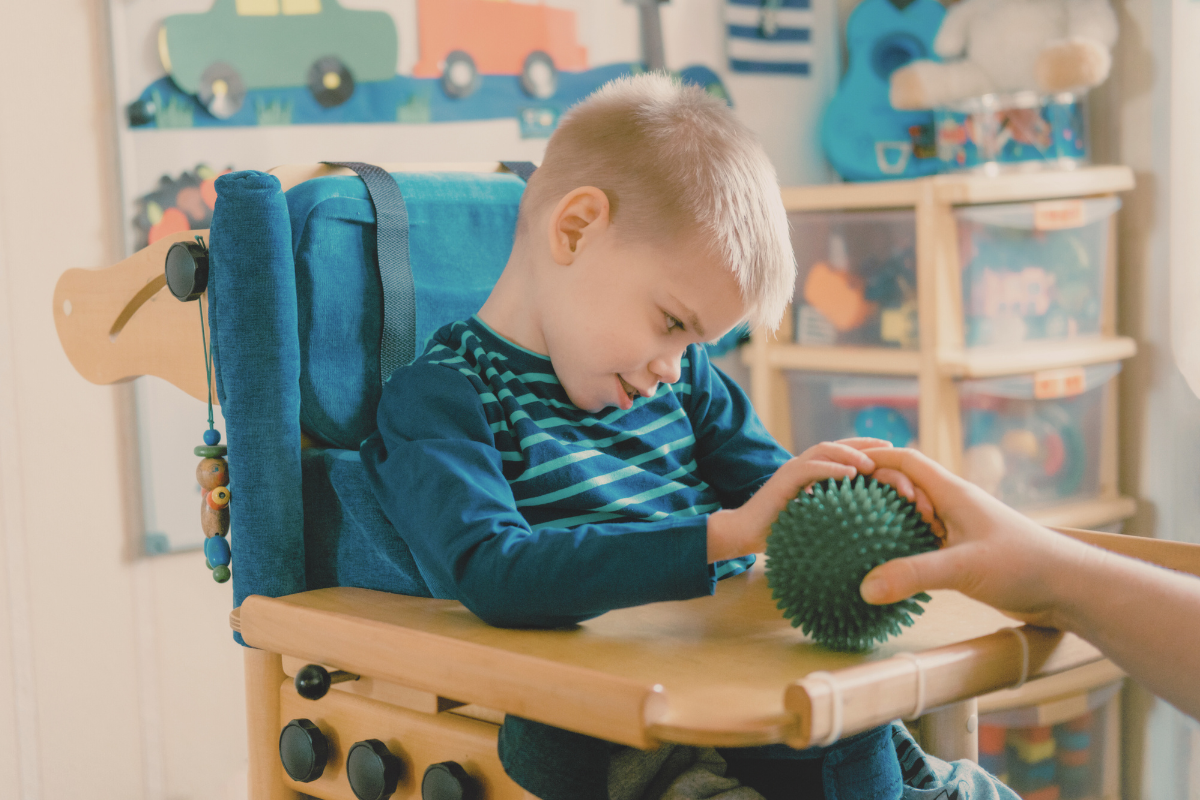
Every child is unique, and so should be their play. Adaptability and inclusivity in gross motor activities ensure that children of all abilities can join in the fun and reap the benefits.
Modified Games
Adapted games are the key to inclusivity.
By tweaking the rules or equipment, every child can participate and thrive, regardless of their abilities. This inclusivity is what builds a supportive and diverse community of little learners.
Encourage Peer Support
Inclusion isn’t just about accessibility; it’s about building an environment of understanding and support.
When children learn to support their peers during activities, they’re not only providing physical aid to each other but also nurturing empathy and social skills. This can go a long way in helping someone who really needs it.
3 Tips to Get Young Kids Moving
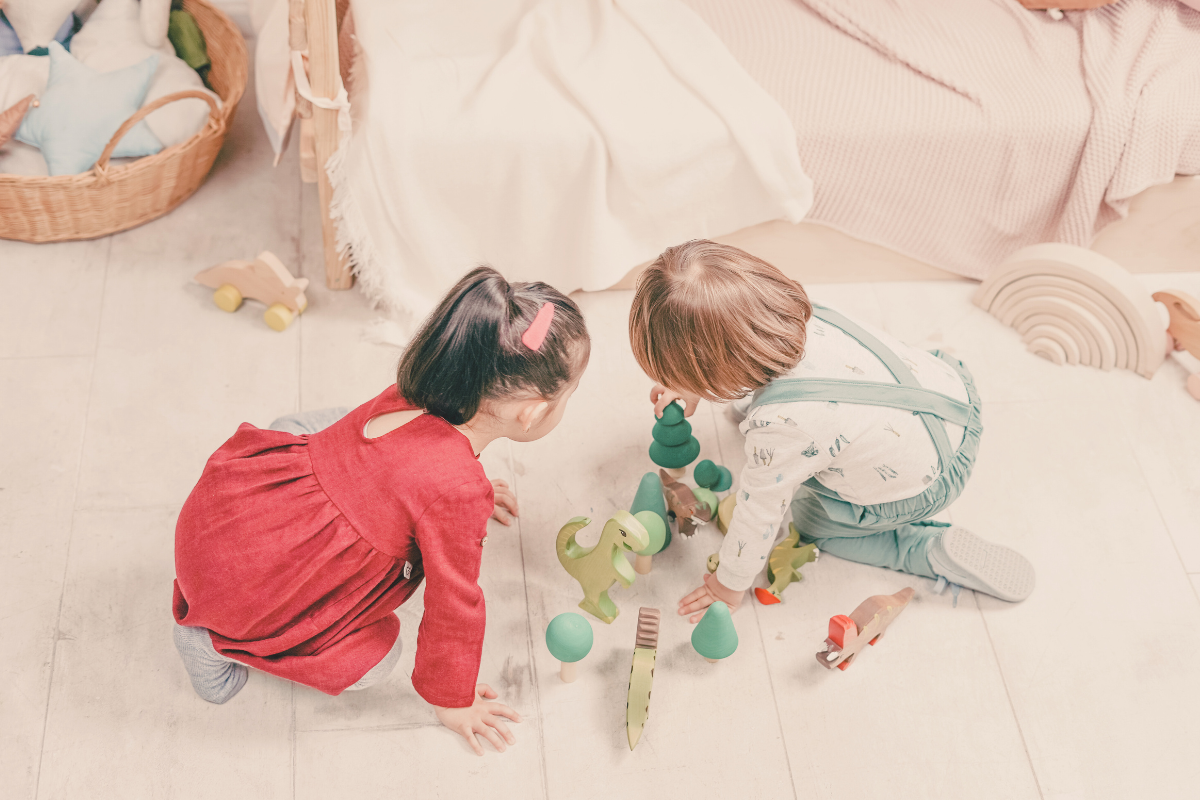
Daily movement is a lifestyle. Encouraging preschoolers to move every day isn't just important for their overall development, but it also sets the tone for a lifetime of health and activity.
Establish Routines
Establishing routines with enjoyable activities is like sneaking vegetables into a smoothie – you get all the benefits without the fuss. By integrating fun activities into daily life, children develop a love for movement that will carry them through to adulthood.
Create Spaces at Home
The home environment is the first gym a child knows. By creating spaces that encourage active play, parents are setting the stage for a healthy and active lifestyle for their little ones.
Make it Fun
Lastly, make moving fun for your kids. If you make moving feel like a chore to them, they may start seeing it as a punishment. Over time, it makes them less likely to want to do it when they no longer see it as a requirement.
So, don't force your kids to move. Instead, make fun physical activities a part of their routine and make sure that there are accommodations for such activities at home. By doing this, you're basically ensuring that your kid will love physical activity all on their own.
Summary
From the living room to the great outdoors, the world is a stage for preschoolers to develop their gross motor skills. Through a variety of fun activities, obstacle courses, and games, children learn to move, balance, and interact with their environment and peers in a way that's both enjoyable and educational.
Frequently Asked Questions
Why are gross motor skills important for children?
Gross motor skills are important for children because they help them build coordination, balance, and strength, which are crucial for everyday tasks and physical activities as they grow.
Can indoor play be as beneficial as outdoor play for gross motor development?
Yes, indoor play can be just as beneficial for gross motor development as outdoor play. You can even turn your living room into a jungle gym! So go on, let your little ones roam wild (safely) indoors.
How can I encourage my child to be more active throughout the day?
Create an "action jar" filled with fun movement ideas, set up daily physical activity routines, and make your home environment conducive to exploration and play. Let's get those little legs moving!
Are there activities that can help with both gross and fine motor skill development?
Absolutely! Engaging in activities like puzzles and blocks is like hitting two birds with one stone, as they help develop both gross and fine motor skills.




